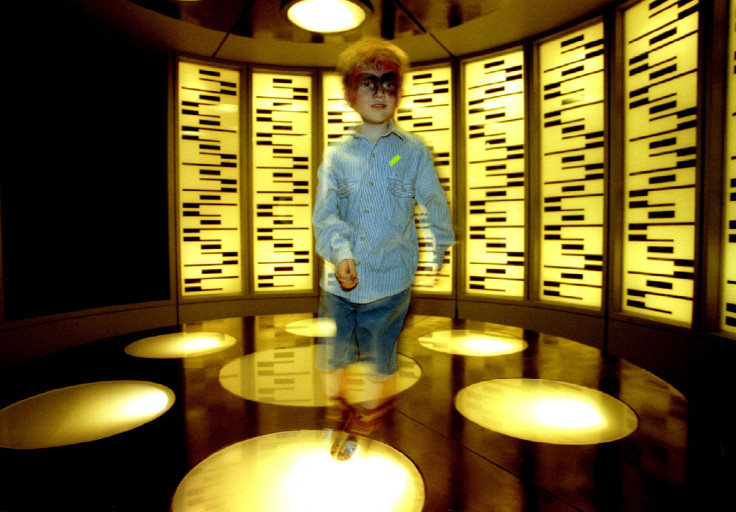7 Far Out 'Star Trek' Technologies That Became Reality

As Mr. Spock, Leonard Nimoy was seen countless times on film and television screens accompanying Capt. Kirk throughout the universe. In his many adventures, Spock was frequently seen donning his tricorder and other gadgets that were mostly nonexistent when the original TV series made its debut in 1966.
Nimoy died Friday, but the legacies of his character and the related worlds of wonder live on. While we’re still years away from either instant teleportation or massive starships that can travel at light speed, many of the technologies seen in “Star Trek” have moved from fiction to fact, one way or another.
Communicators
The communicator was a basic piece of equipment for the crew of the Starship Enterprise, especially when they explored the worlds outside their ship.
At present, we have the smartphone. Whether for communication or for navigation, many people depend on their handsets. And, just like communicators, the devices can be employed to provide emergency responders with users’ locations.
Phasers
Small phasers were essential weapons in the “Star Trek” universe employed to either kill or subdue enemies (the latter purpose indicated by the oft-heard instruction, “Set to stun”). Mounted on starships, large phasers fundamentally served as anti-missile defense weapons.
Currently, phaserlike technology can be found in the form of a laser weapon mounted on the USS Ponce. Installed on the ship last year, the weapon system can target helicopters, drones and boats moving at high speeds, according to the U.S. Naval Institute. While a handheld phaser with the ability to stun has yet to be developed, some “Star Trek” fans have built their own, using laser pointers and other tech.
Universal Translator
The universal translator was a device that enabled the Enterprise crew to communicate with aliens who spoke different languages, without the need for an intermediary.
While such a technology service was nonexistent when “Star Trek” first appeared, several tech companies now offer it. One example is Skype Translator, which can translate spoken conversation into another language, almost in real time. Still being tested, Skype Translator currently supports English and Spanish. The Microsoft Corp. is looking to add more languages in the future. Google Translate functions similarly by using a smartphone’s microphone to record and translate spoken words. In addition to audio and text translation, it can also translate street signs, with the user simply pointing a smartphone camera at them.
Replicator
Star Trek’s replicators were machines that could create and recycle objects on demand, primarily food and drinks. But they also had the ability to produce inanimate objects as well, such as machine parts or clothing.
The 2015 equivalent of the replicator can be found in the form of the 3D printer. Using filaments made of acrylonitrile butadiene styrene, carbon fiber and plant-based plastics, 3D printers can produce just about any object -- from action figures to gun parts. While we don’t have one replicator that can produce both food and other objects on demand, the food industry has taken an interest in the technology, with 3D printing used to produce a chocolate confection or something as complex as a pizza.
Tricorder
The tricorder was a multifunctional handheld device primarily employed for recording and analyzing data. While it could be used in various situations, one of its most notable functions was in helping Dr. McCoy diagnose patients.
A similar technology is being developed by universities such as the Georgia Institute of Technology and other research organizations. Qualcomm Inc. has offered competitors $10 million through its XPrize program to make the tricorder a reality. One product that came out of this competition was the Scanadu Scout, a small handheld device that can monitor body temperature, blood pressure and heart rates.
Visor
The Visor, or Visual Instrument and Sensory Organ Replacement, was a medical device used to give vision to the blind. The Visor also gave a user the ability to see nonvisible light such as ultraviolet and infrared light. The technology was used throughout the United Federation of Planets, and “Star Trek: The Next Generation” fans mostly saw it worn by Geordi La Forge, chief engineer of the Enterprise.
Advances in medical technology have led to devices similar to the Visor. One is the Argus II. Approved by the U.S. Food and Drug Administration, the retinal prosthetic implant can, with the aid of an external camera, help restore some vision to adults who have lost their eyesight. The Alpha IMS, another retinal prosthesis in clinical trials, also restores some vision to patients.
Computerized Virtual Assistant
The Enterprise’s main computer could research solutions to problems and answer questions, giving feedback in feminine tones voiced by actor Majel Barrett, who also played nurse Christine Chapel.
Fast-forward (or backward) to 2015, and we have Apple Inc.’s Siri, as well as a number of other voice-based assistants in navigation systems, call centers and other applications. Mr. Spock would no doubt have found our progress in the 49 years since “Star Trek” began to be absolutely, positively “fascinating.”
© Copyright IBTimes 2024. All rights reserved.





















